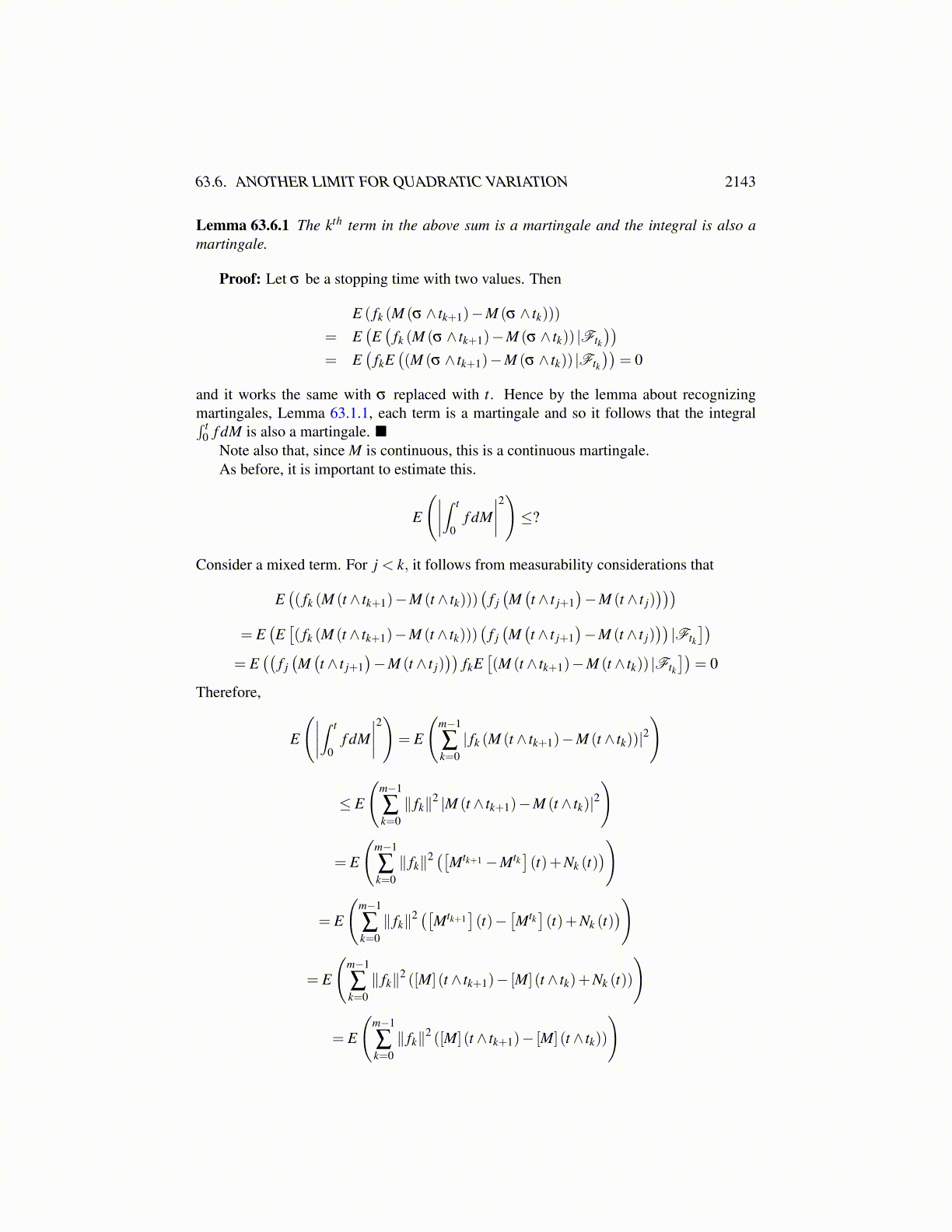
63.5. THE QUADRATIC VARIATION AND STOCHASTIC INTEGRATION 2143
Then letting
Xτ ln,m (t) =
∣∣∣∣∣∣∣∣∫ t
0( fn− fm)dMτ l
∣∣∣∣∣∣∣∣U,
Xn,m (t) =
∣∣∣∣∣∣∣∣∫ t
0( fn− fm)dM
∣∣∣∣∣∣∣∣U
=
∣∣∣∣∣∣∣∣∫ t
0fndM−
∫ t
0fmdM
∣∣∣∣∣∣∣∣U
It follows Xτ ln,m is a continuous nonnegative submartingale and from Theorem 62.9.4 just
listed,
P([
Xτ l∗n,m (T )> λ
])≤ 1
λ2
∫Ω
Xτ ln,m (T )2 dP
≤ 1
λ2
∫Ω
∫ T
0| fn− fm|2 d [Mτ l ]dP
≤ 1
λ2
∫Ω
∫ T
0| fn− fm|2 d [M]dP
Letting l→ ∞,
P([
X∗n,m (T )> λ])≤ 1
λ2
∫Ω
∫ T
0| fn− fm|2 d [M]dP
Therefore, there exists a subsequence, still denoted by { fn} such that
P([
X∗n,n+1 (T )> 2−n])< 2−n
Then by the Borel Cantelli lemma, the ω in infinitely many of the sets[X∗n,n+1 (T )> 2−n]
has measure 0. Denoting this exceptional set as N, it follows that for ω /∈ N, there existsn(ω) such that for n > n(ω) ,
supt∈[0,T ]
∣∣∣∣∣∣∣∣∫ t
0fndM−
∫ t
0fn+1dM
∣∣∣∣∣∣∣∣≤ 2−n
and this implies uniform convergence of{∫ t
0 fndM}
. Letting
G(t) = limn→∞
∫ t
0fndM,
for ω /∈N and G(t) = 0 for ω ∈N, it follows that for each t, the continuous adapted processG(t) equals
∫ t0 f dM a.e. Thus
{∫ t0 f dM
}has a continuous version.